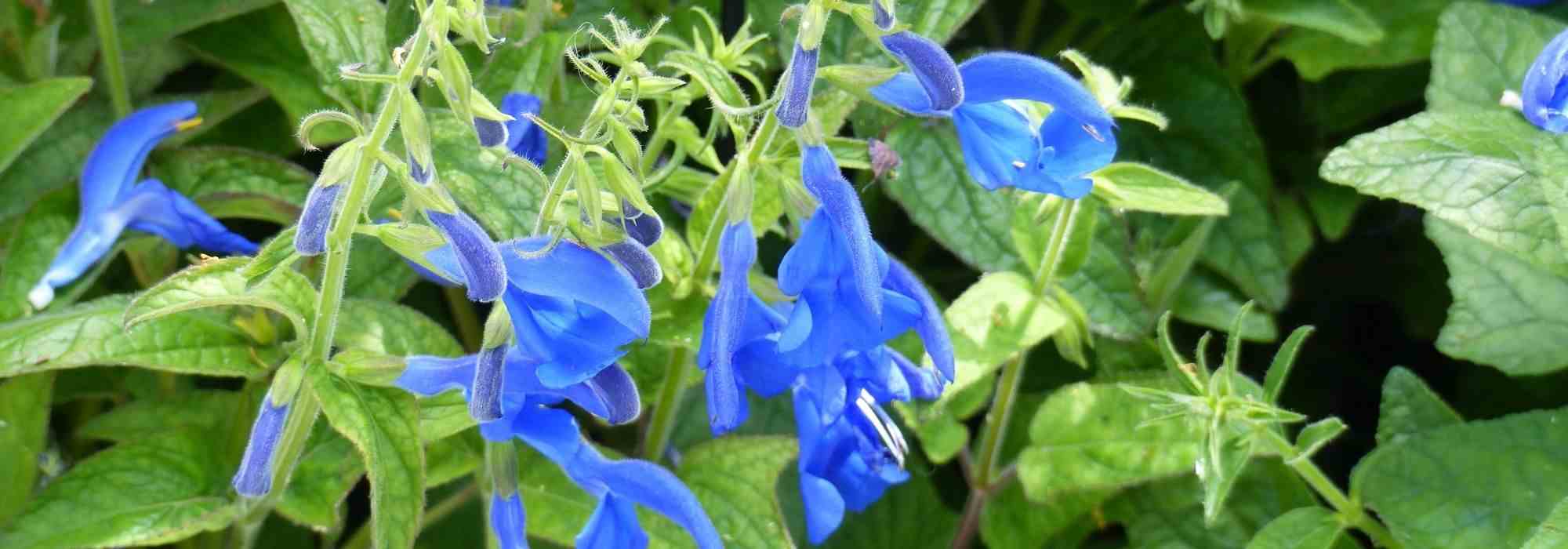
7 blue salvias
To adopt in the garden
Contents
Vigorous and sturdy, sages are renowned for their long-lasting colourful flowering, good drought resistance, and ease of maintenance. While the vast majority prefer sunny, dry, and poor soils, there are a few exceptions that require cool to moist soils and shaded exposure. Melliferous and nectariferous, sage provides a true feast for insects well into late summer. We also appreciate it for its aromatic leaves, edible flowers, and health benefits. Planted as a perennial or annual, each species and variety of blue sage has its own characteristics: ground cover, shrubby sages, tall or short erect habits, unusual leaves, and even sky-blue or dark blue flowers, and some are bicoloured.
Discover our 7 favourite blue sages!
Salvia microphylla ‘Victoria Blue’: an exceptional flowering duration
Salvia microphylla ‘Victoria Blue’ stands out from other shrubby sages due to its long and abundant flowering occurring from June to September! Above a clump of upright aromatic leaves, very dark stems bear floral spikes measuring around twenty centimetres. The small elongated flowers with light centres are coloured in a beautiful deep violet blue! Planted in full sun or partial shade, this perennial thrives in very well-drained and even poor soil. With medium hardiness (down to -10 °C), it is best to place it in a sheltered spot, ensuring the soil is not too moist and mulching its base as winter approaches.
Easily reaching 60 cm in height and 50 cm in width, this dense bushy sage is showcased well in large pots or in borders alongside perennials such as Centranthus ruber with dark pink flowers, the white David Austin rose ‘Glamis Castle’, pink peonies like Paeonia lactiflora ‘Lady Alexandra Duff’ and ‘Inspecteur Lavergne’, as well as Stachys byzantina with its silver foliage.
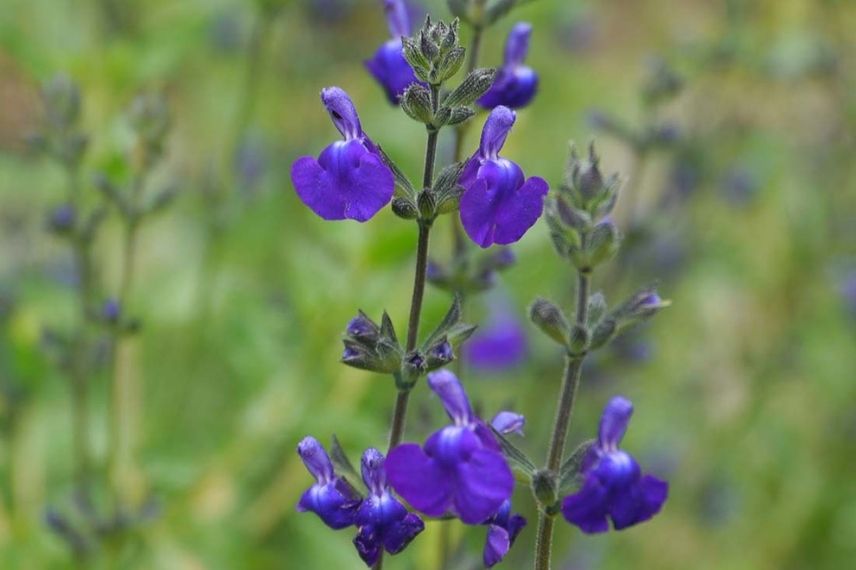
Salvia microphylla ‘Victoria Blue’
Salvia forreri: an excellent groundcover
Here is an ideal sage for groundcover: the Salvia forreri! Once established, this perennial can form a spread of up to 80 cm – 1 m with a height of 30 centimetres. Indeed, its suckers allow it to spread easily and quickly. Its light green foliage releases a pleasant fragrance when crushed. Favoured by pollinating insects, these small light blue flowers with a white centre bloom profusely from July to October. In colder regions, this sage should be planted in a container for easy wintering, as it does not tolerate temperatures below -7 °C. In Mediterranean climates, it can survive winters in the ground, provided its stump is protected from the cold with mulch.
This ground-covering perennial, native to Mexico and Texas, thrives in sunny, warm locations and is very drought-resistant. It is therefore perfectly suited for planting in borders, rockeries, or slopes, combined with other aromatic plants such as Thyme, Santolina, Nepeta faassenii, and small grasses like Carex, Fescues, and Stipa pennata.
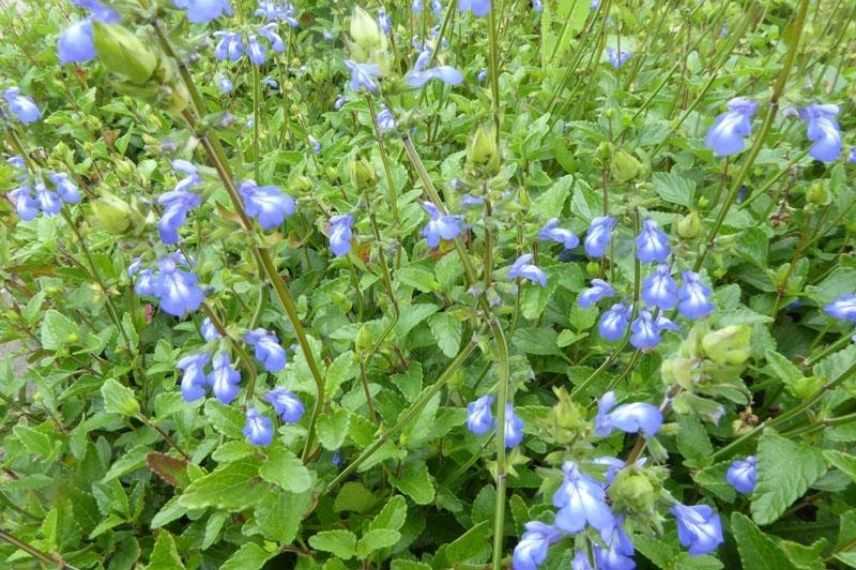
Salvia forreri (photo Guido)
Discover other Salvia - Sage
View all →Available in 2 sizes
Available in 2 sizes
Available in 1 sizes
Available in 1 sizes
Available in 2 sizes
Available in 2 sizes
Available in 1 sizes
Available in 1 sizes
Available in 2 sizes
Available in 2 sizes
Salvia guaranitica ‘Black and Blue’: a giant!
In the category of large sages, the Salvia guaranitica ‘Black and Blue’ is impressive! This shrubby clump grows to over 1.5 metres high and comfortably spreads to form a bush with a diameter of one metre. It certainly does not go unnoticed! Its semi-woody stems bear large, lanceolate, wrinkled leaves that emit an anise scent when crushed. From August to October, it produces large spikes of deep blue flowers on black floral stems. The black floral stems and calyxes contrast impeccably with the green foliage and the intensely coloured inflorescences. This perennial prefers rather fertile soils with good sandy and gravelly drainage. Drought-resistant in summer, it thrives in full sun but sheltered from the wind.
Moderately hardy, the Guarani Sage should be planted in a very large pot on a terrace in a continental climate or at the back of a border in a mild climate! Ideal for a dry garden, Salvia guaranitica ‘Black and Blue’ integrates perfectly into a dry garden with Gauras, large Stonecrops like Sedum spectabile ‘Septemberglut’, tall grasses, and Achilleas in various colours, along with Aster turbinellus.
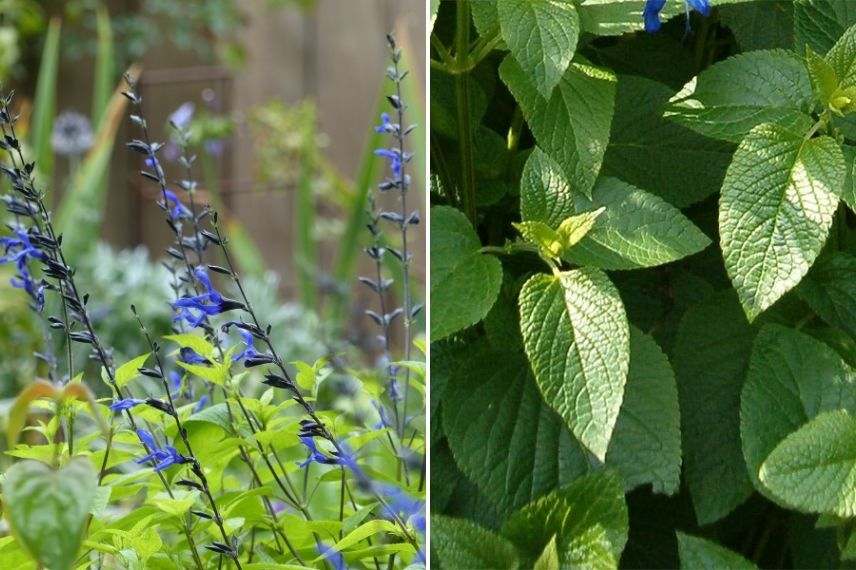
Salvia guaranitica ‘Black and Blue’
Read also
Sages: which varieties to choose?Salvia uliginosa: a tender celestial blue
Unlike most sages that prefer dry and warm conditions, Salvia uliginosa is a lover of cool, moist, and rather calcareous soils. This explains its French name: the Marsh Sage. Little known, this species is however remarkable for its beautiful and unusual sky-blue flowering. From July to November, these floral spikes bring freshness and lightness to borders and provide food for insects until autumn! For the variety Salvia uliginosa ‘African Skies’, the blue flowers are much more vibrant. Reaching a height of about 1.5 metres with a spread of 80 cm, this upright clump can become invasive over large areas where all conditions are favourable for its development. Indeed, it expands thanks to a rapidly growing rootstock.
In a naturalistic garden, at the back of a sunny border, the Marsh Sage pairs beautifully with perennials such as Siberian and marsh Irises, Astilbes, the Ethiopian Arum, the Meadowsweet, and Lythrum salicaria ‘Robert’.
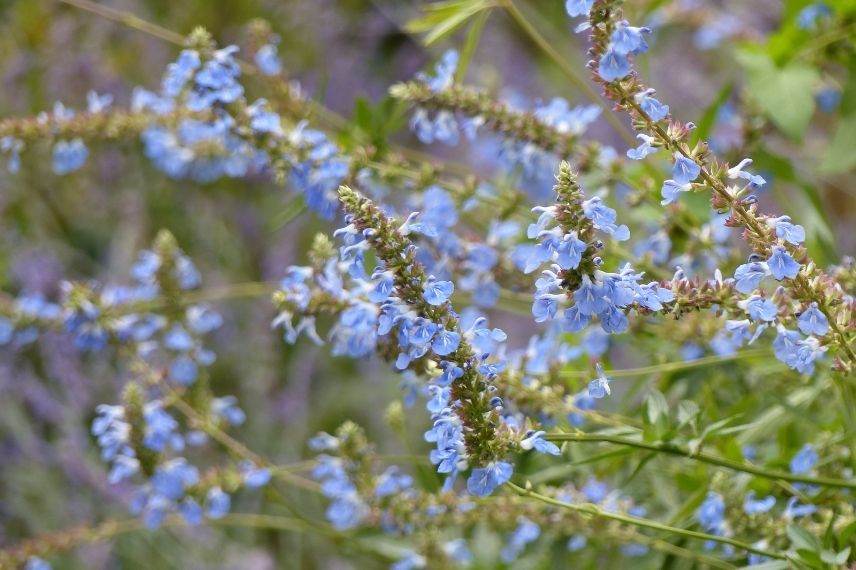
Salvia uliginosa (photo PBK)
Salvia pratensis ‘Madeline’: a rare blue bicoloured flowering
Highly floriferous, the Meadow Sage Salvia pratensis ‘Madeline’ surprises with its clusters of small bicoloured flowers appearing from June to August. The upper lip of the flower is pigmented in violet-blue, while the lower lip is tinged with white. This recent variety has inherited the adaptability of the Meadow Sages native to Western Europe. It is unbothered by drought, poor soils, and difficult conditions. It can withstand negative temperatures down to -15 °C. Its deep roots are ideal for borders, rockeries, or for stabilising slopes and consolidating banks.
Very leafy, dense, and bushy, Salvia pratensis ‘Madeline’ pairs beautifully in cool situations with Iris sibirica ‘Blue Moon’ and ‘Caesar’s Brother’, Allium ‘Gladiator’, and Verbascum ‘Helen Johnson’.
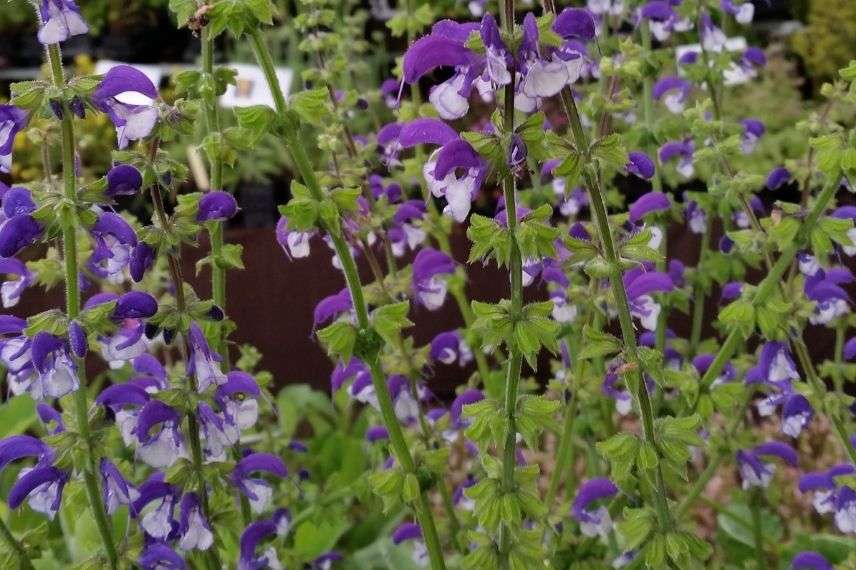
Salvia pratensis ‘Madeline’
Salvia cacaliifolia: unique leaves
Very often, the leaves of sages are ovate and elongated, but the distinctive feature of Salvia cacaliifolia is the triangular shape of its leaves. Apple green in colour and glossy on top, they emit a lemongrass scent when crushed. The resemblance of these leaves to those of Scarlet Cacalia (Emilia javanica) has given it the name Cacalia-leaved Sage. Also known as Guatemalan Sage, this perennial is very little hardy and is mainly grown in pots. In a mild climate, it can be planted in the ground, but well protected from wind and sea spray. This homogeneous clump, measuring 60 cm in all directions, produces magnificent gentian blue flowers from June to October, perched on pubescent stems.
Exposed to sun or partial shade, in rich, cool, and well-drained soil, Salvia cacaliifolia can be accompanied by Echinacea purpurea ‘Pink Double Delight’, Kordes rose ‘Parfuma Catherine de Médicis’, violet Delphiniums, and white Leucanthemum superbum.
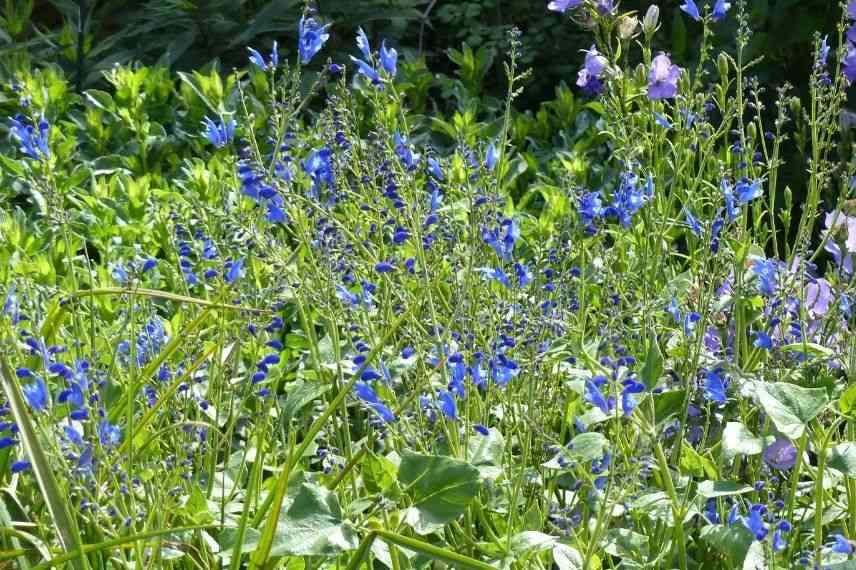
Salvia cacaliifolia
Salvia nemorosa ‘Blue Marvel’: perfect for window boxes
Among the genus Salvia, we also distinguish the Woodland Sages (Salvia nemorosa). Very hardy and low in water requirements, the variety Salvia nemorosa ‘Blue Marvel’ forms a compact, bushy clump about thirty centimetres in all directions. This makes it a perennial suitable for pot, window box, or border planting. The ovate, crinkled, and fragrant leaves are arranged in a rosette and are evergreen. Its blue-violet flowers form large spikes, the largest among the Woodland Sages. This perennial flowers from June to August in intense clusters at the tips of stems that are often red at the base. Regular removal of faded flowers encourages further blooming.
Gold medal winner in 2016, Salvia nemorosa ‘Blue Marvel’ looks stunning in a contrasting yellow and blue border with hardy geraniums in blue, Campanulas, Gentian ‘Blue Star’, Coreopsis ‘Citrine’, and annuals like Bidens ‘Lemon Moon’ and Erysimum ‘Winter Light’.
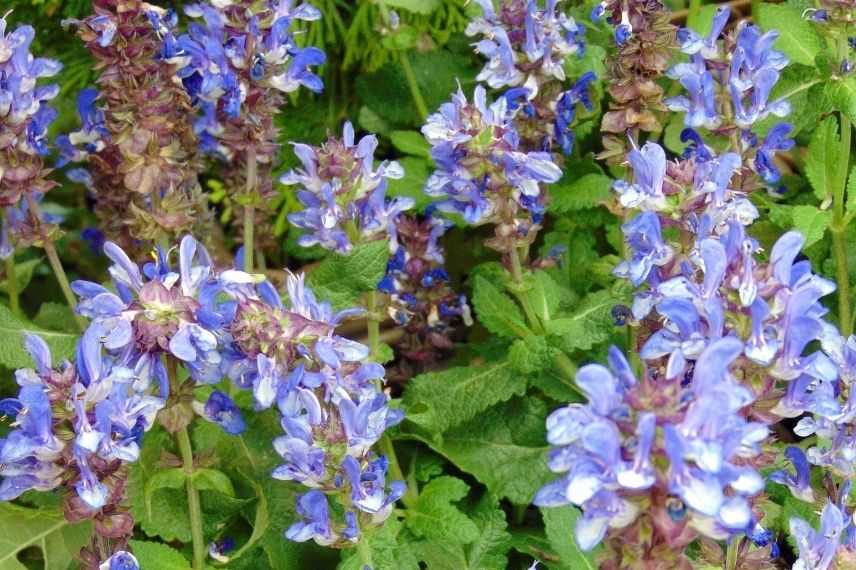
Salvia nemorosa ‘Blue Marvel’
To find out more
Discover all our tips on Sages, salvia: planting, pruning, care
- Subscribe!
- Contents
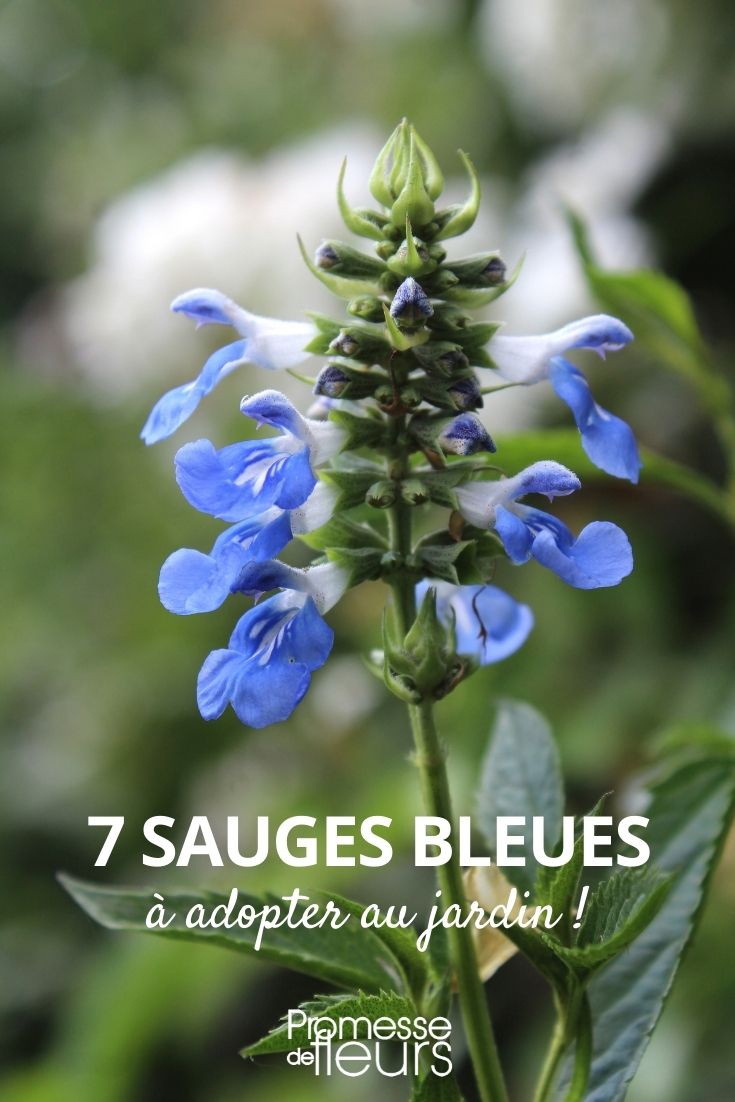































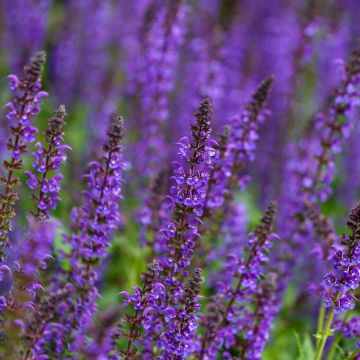
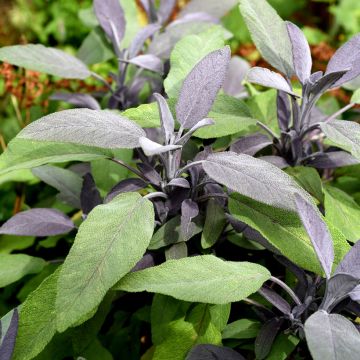
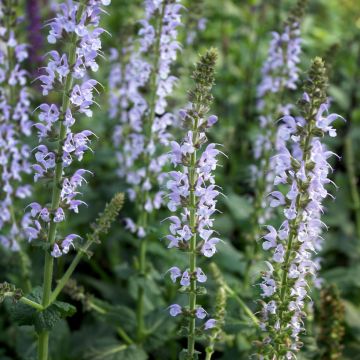
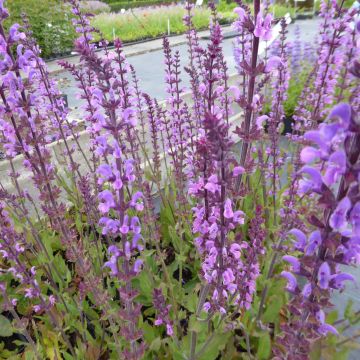
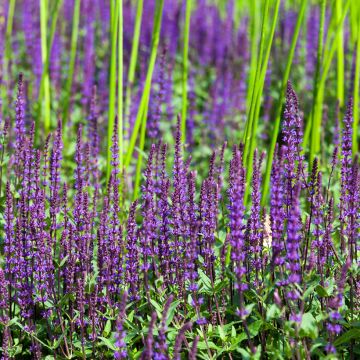
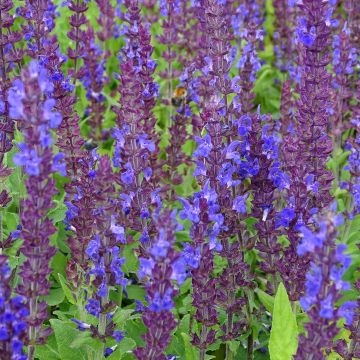
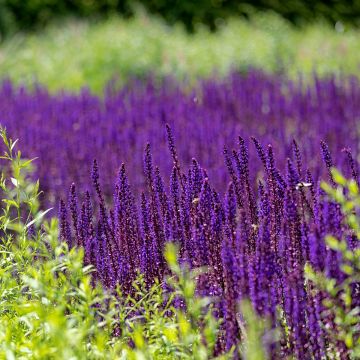
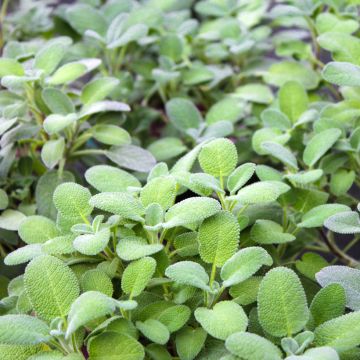
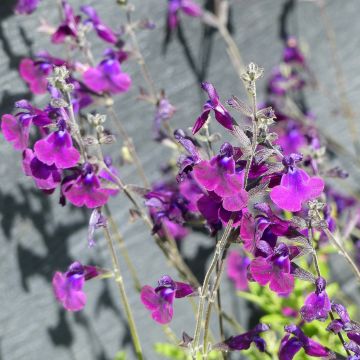
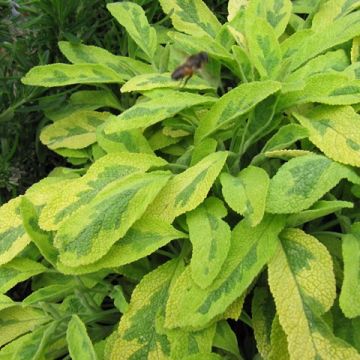
Comments